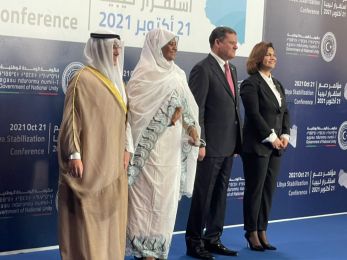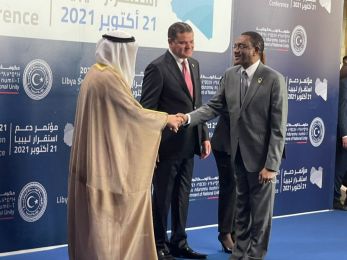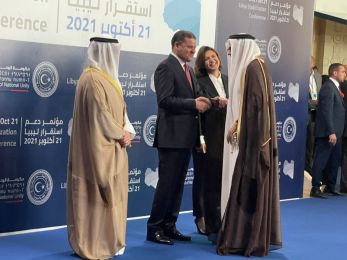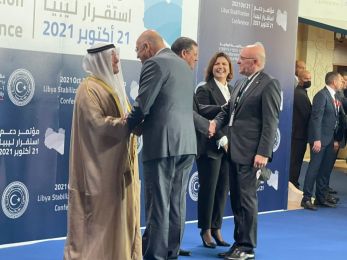South Africa's Minerals Council launches first National Day of Women in Mining
Johannesburg, South Africa (PANA) - The Minerals Council of South Africa Friday launched the first National Day of Women in Mining, highlighting initiatives designed to achieve set targets for the advancement of women in the mining industry.
Minerals Council Chief Executive Officer Roger Baxter told the media during a briefing that, at present, women make up 12 per cent of the mining workforce, 17 per cent of senior management and 18 per cent of skilled and technical employees.
While noting that this was double the female representation as recorded in 2008, Baxter said it was also unacceptable from an overall point of view for the council.
Online Mining Weekly reported Saturday that the launch of the National Day of Women in Mining was the council’s way of drawing a line in the sand and making a commitment to drive change across its organisation, its member companies and, hopefully, to spur broader change.
While regulatory, social and physical barriers had played a part in the slow progress experienced, bold and collaborative action was required to address this issue, various speakers indicated during the virtual briefing.
This first National Day of Women in Mining seeks to spur the process within the Minerals Council leadership, in mining company board rooms and within mining companies themselves to put the advancement of women firmly on the agenda.
Every year, the industry will come together in August to take stock of progress made.
Baxter said the council did not believe that one month was sufficient to address the issue of gender parity; therefore, it had adopted a similar approach to that being used to address safety and health, which was considered a fundamental priority every day for women in mining.
The stretch targets set and agreed to by Minerals Council members are to ensure that the percentage of women in mining is at least doubled by 2025.
Ultimately, the industry will work towards 30 per cent to 40 per cent women representation across the industry and 50 per cent in management over the next decade.
Minerals Council vice president and Women in Mining Leadership Forum chairperson Nolitha Fakude noted that these ambitious targets went above and beyond what was outlined in the current iteration of the Mining Charter.
She said the council would hold itself and its members accountable to these targets.
She also highlighted that the pandemic had presented an opportunity to drive change in gender parity, given that it had led to a new normal and flexibility in workplaces, which could be time to challenge the status quo and push for more diversity in the workplace.
Moreover, she noted that the pandemic had disproportionately affected women’s jobs and, therefore, it was more imperative than ever to drive change in gender parity in the workplace.
“There are moral and regulatory imperatives to advancing women in mining. But there is an even more important point: No industry can continue to thrive if it only uses half of its population.
"When we bring in people with different skills and abilities to make a positive contribution, we get the best outcomes for the industry and for South Africa’s economy,” she said.
Further, she noted that organisations that were more diverse were statistically proven to be more profitable and that those with greater gender parity were more resilient in times of difficulty.
The opportunities to accelerate the work of the Women in Mining Leadership Forum include the piloting of remote working models and technology; a push to implement technology with the potential to benefit and attract women; and a mindset shift which offers an opportunity to challenge the status quo, including on gender diversity.
“For the industry to meet the bold and ambitious targets we have set will require not just real commitment from senior executives, but also the inculcation of this changed culture across all levels in all our member companies.
"The Minerals Council Women in Mining Leadership Forum – the most high-level structure under the board – includes CEOs and senior executives from 16 mining company members.
"That the leaders of two of South Africa’s largest mining companies, both Minerals Council office bearers, have agreed to lead this initiative is testimony to the importance we place on this issue. In addition, a senior Women in Mining Task Team remains in place to ensure that the policies and intentions adopted at board level can be implemented,” Fakude said.
“One small but significant step is that, at the beginning of every Minerals Council meeting, there will be reflection on the continued importance of women in mining, the challenges that are being faced and the successes that are being achieved. This small step will ensure that we put gender on the agenda,” she added.
The three pillars driving women in mining in the current context - governance, communication and action - are supported by six priority initiatives, which focus on the development of an organisational structure and dynamic communication strategy; the public celebration of women in mining Covid-19 heroes; ensuring a commitment from member companies to deliver on the seven foundational measures; the defining role of women in the council’s Covid-19 response; and the integration of inclusion of best practices in mining modernisation.
The Women in Mining Task Team is working towards seven key foundational measures which it hopes to see in place by the end of this year.
These measures include reaffirming zero tolerance for gender-based violence through the Stop Abuse campaign; developing gender diversity and inclusion policies;and providing a reporting system for gender diversity issues.
The rest are initiating unconscious bias training to transform culture; deploying ongoing company-wide pulse check surveys; building an inclusive physical environment; and supplying personal protective equipment specifically designed for women.
-0- PANA AR/RA 22Aug2020






